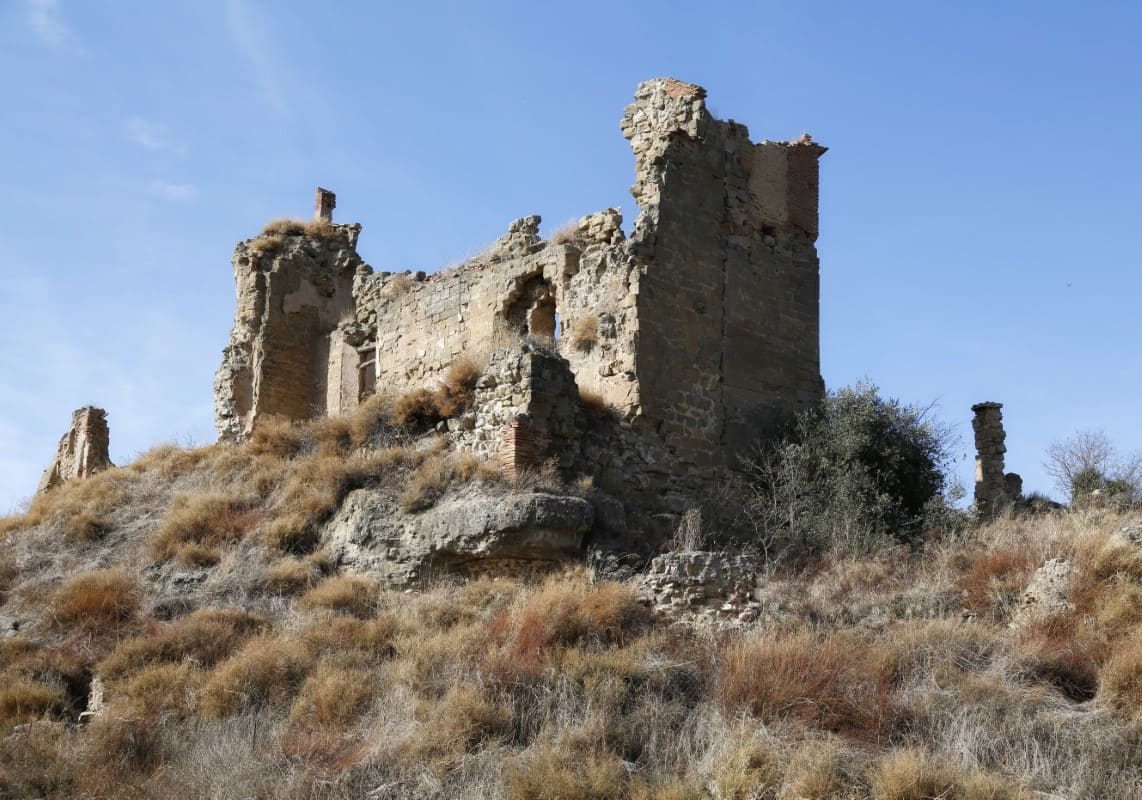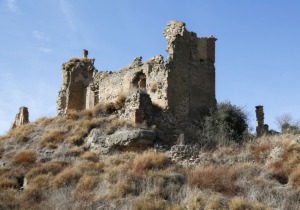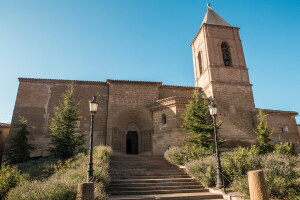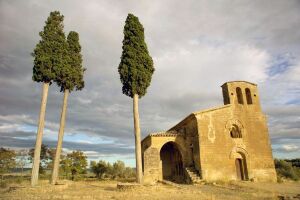The course of the river, the course of history. To follow the course of the River Vero upstream is to take a journey through history and time.
The route gradually climbs alongside the stretch of the River Vero that courses between the towns of Castillazuelo and Buera. Stops can be made at a number of interesting villages and a beautiful bridge, and the changing landscapes will encompass fields of crops, riverside groves and forests of majestic oak.
From Barbastro take the A-1232 road towards Alquézar. Approximately 5km from the city, you will come across Castillazuelo, which is the first place of interest of the excursion. Park the car at the entrance to the village, and take a gentle stroll around the quiet streets. This is an ideal way to start a journey that follows the course of the River Vero.
After wandering along the friendly main street and crossing the church square, you will arrive at a narrow stone bridge dating back to the 16th century. This bridge takes you to the River Vero Visitor Centre. A visit here is essential to understand how the characteristics of nature and of man have developed in harmony with the river during the centuries. Visitors of all ages will enjoy the centre, due to the careful attention to detail and attractiveness of the displays.
There is a pleasant walk that leaves from just outside the visitor centre and follows both sides of the river, which is highly recommended. The circular route is simple and self-explanatory and is known as the Camino ras Vals or Ras Vals Way.
After this chance to stretch your legs, the route continues by car along the A-1232. The next riverside village is called Pozán de Vero and is famous for three distinct reasons. Firstly, for its candied almonds; secondly, because of a famous witch known as Dominix the Cripple who once lived there; and finally, for being the birthplace of Joaquín Campodarbe, one of the biggest ‘Casanovas’ to have ever lived in the area!
Climbing steadily up the wide valley of the River Vero, it is possible to make out the riverside thickets that mark the course of the river, and which are home to many different species of fauna.
Soon you will come across Huerta de Vero on the right-hand bank of the river. This pleasant village has an interesting centre with some fine examples of popular architecture, such as the attractive parish church.
Following the route to the north, it is possible to take a small detour in the direction of the village of Buera. The village centre is made up of a number of traditional buildings adorned with coats of arms, arched doorways and beautiful paved patios. From here you can enjoy another simple walk by following what is known as the Route of Santa Maria of Dulcis. The new Olive Oil Visitor Centre – or El Torno de Buera as it is also called - is also well worth a visit, as it reveals the secrets of a natural product that is essential to the people of Somontano. An addition for the future will be the Camino del Agua, or the Water Trail, which will offer visitors many new and unknown places to visit with a variety of water-related themes such as wells, springs and traditional outdoor wash houses.
Bidding farewell to Buera, rejoin the main road A-1232 and continue alongside the River Vero. Just a kilometre after rejoining the main road you will come across the magnificent Bridge of La Albarda, which is considered to be one of the most beautiful and best-preserved bridges in the whole of the Huesca province.
From the beauty of this old bridge, the route continues to the splendour of the medieval village of Alquézar. This is a place that must be visited at leisure in order to be able to soak up the medieval atmosphere, and to allow time to visit the numerous attractions of historic importance. Due to the detail involved, Route 7 is dedicated solely to the attractions of Alquézar.









